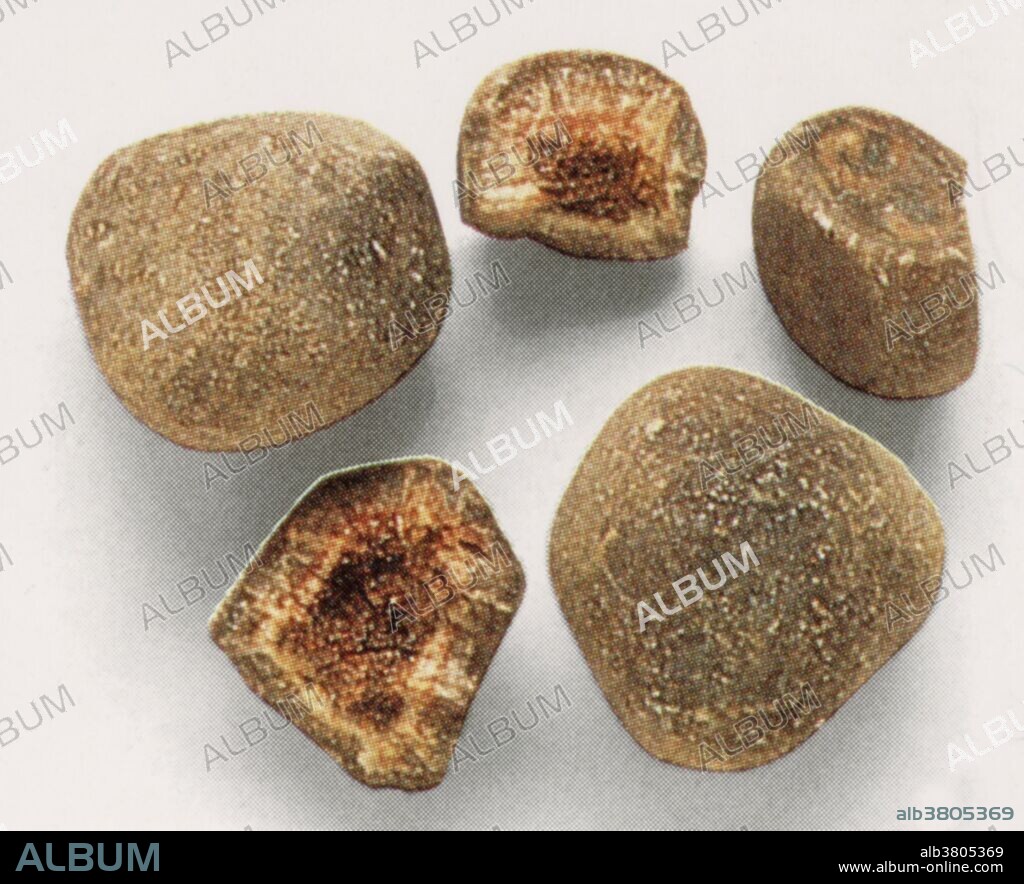alb3805369
Bezoar Stones, Medieval Antidote for Poisoning

|
Ajouter à une autre Lightbox |
|
Ajouter à une autre Lightbox |



Avez-vous déjà un compte? S'identifier
Vous n'avez pas de compte ? S'inscrire
Acheter cette image.
Sélectionnez l'usage:

Titre:
Bezoar Stones, Medieval Antidote for Poisoning
Légende:
Voir la traduction automatique
Bezoar Stones. These natural rocklike objects form in the stomachs of animals, such as goats, sheep, and cows, and were once said to have magical powers against disease. Human stones from the bladder, kidney, and gall bladder were similarly prized. A bezoar is a mass found trapped in the gastrointestinal system, though it can occur in other locations. Bezoars were sought because they were believed to have the power of a universal antidote against any poison. It was believed that a drinking glass which contained a bezoar would neutralize any poison poured into it. The word bezoar comes from the Persian pad-zahr, which literally means "antidote". The Andalusian physician Ibn Zuhr, known in the West as Avenzoar, is thought to have made the earliest description of bezoar stones as medicinal items. In 1575, the surgeon Ambroise Paré proved that the bezoar stone could not cure all poisons as was commonly believed at the time.
Crédit:
Album / Science Source / New York Public Library
Autorisations:
Taille de l'image:
3444 x 2795 px | 27.5 MB
Taille d'impression:
29.2 x 23.7 cm | 11.5 x 9.3 in (300 dpi)
Mots clés:


 Pinterest
Pinterest Twitter
Twitter Facebook
Facebook Copier le lien
Copier le lien Email
Email
